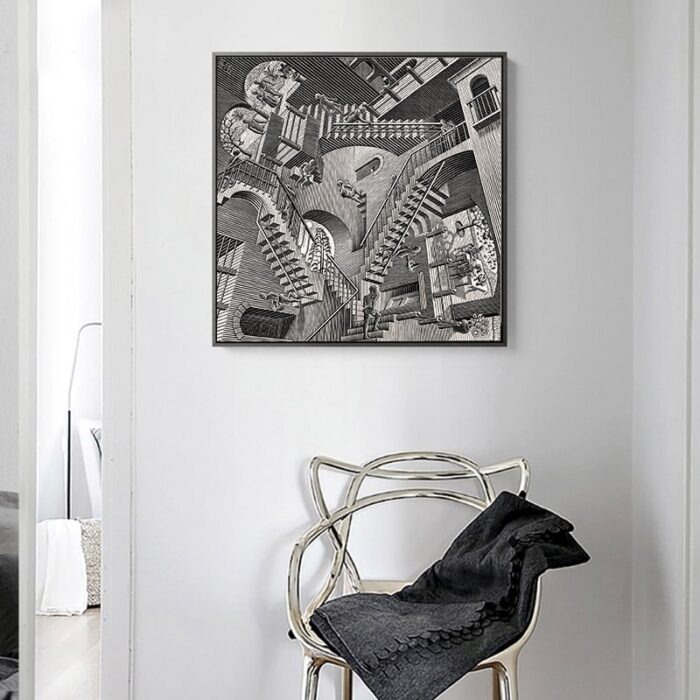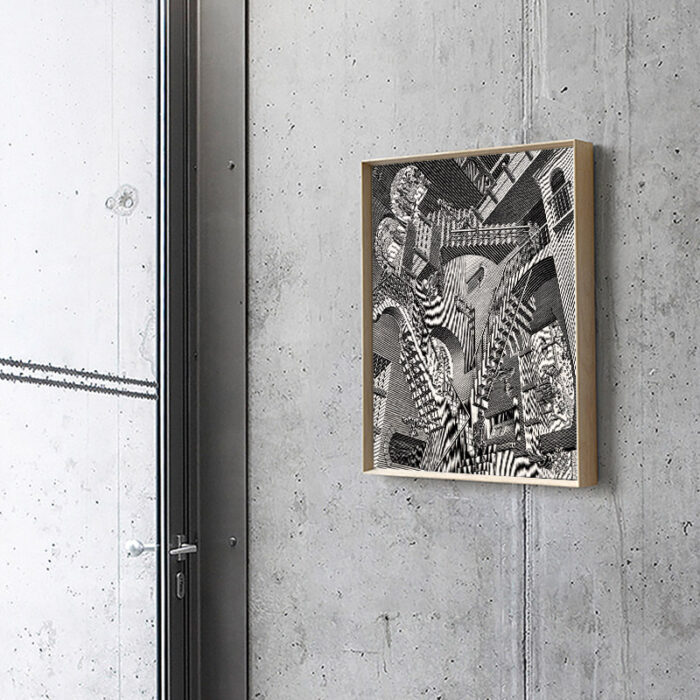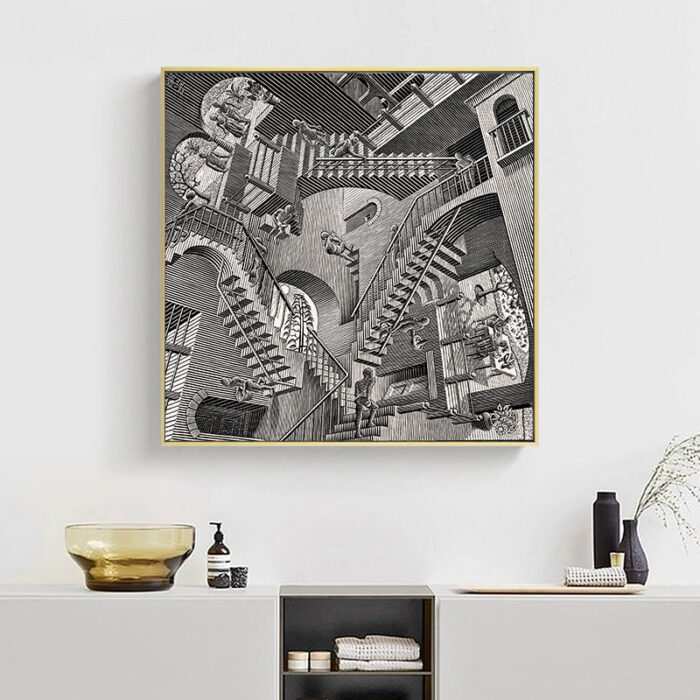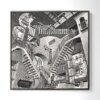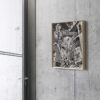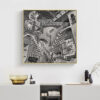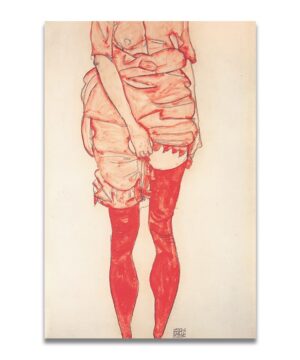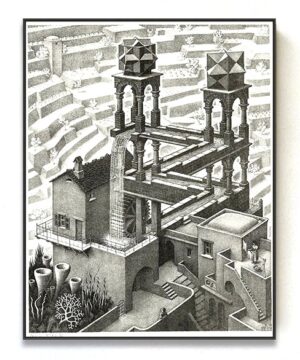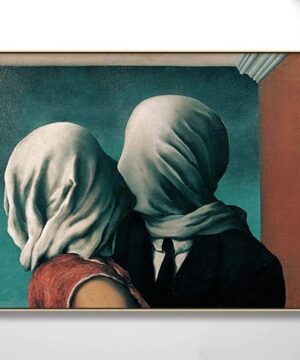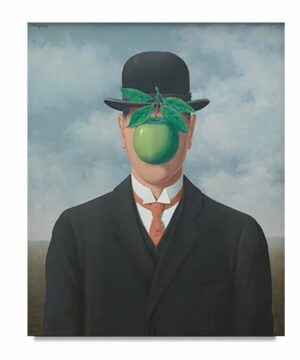Dutch artist Maurits Cornelis EscherDutch artist Maurits Cornelis Escher (1898-1972) is internationally appreciated for his graphic art today. He is best known for his woodcuts, mezzotints, and lithographs, featuring mathematical and “impossible” objects, in which he explored symmetry, perspective, infinity, and reflection. Born as the youngest son of a civil engineer, he was a sickly child and had poor grades at school failing second More is internationally appreciated for his graphic art. He is best known for his woodcuts, mezzotints, and lithographs, featuring mathematical and “impossible” objects in which he explored symmetry, perspective, infinity, and reflection. With the staircases of “Relativity”, He experimented with an imagined sphere, in which the laws of gravity do not apply. Although associated with SurrealismSurrealism was a 20th-century philosophical, literary, and artistic movement seeking to channel the unconscious to access the imaginary. Proponents of Surrealism rejected the notion of understanding life in rational and conventional terms in favour of asserting the value of the unconscious mind, dreams, the strangely beautiful, and the uncanny. André Breton, the leader of a group of poets and artists More due to his fantastical imagery, Escher never saw himself as belonging to any of the art movements of his time.
Where is the picture “Relativity” today?
The original print of the lithograph “Relativity” is part of the Cornelius Van S. Roosevelt Collection today.
What’s in it?
“Relativity” presents an architecture in tonesIn color theory, a tone is a version of a color created by adding gray (a mix of black and white) to the original hue. This concept is essential for artists and designers as it allows for a wide range of colors that are neither too dark nor too light, providing versatility in creating depth, mood, and harmony within a More of black, white, and gray with seven staircases in an apparently three-dimensional structure, populated by numerous individuals walking up and down in constant motion. However, the architectural structure does not adhere to common rules of gravity since the staircases are segmented into different components and all use separate viewpoints. A closer look unveils a phenomenon reminiscent of the Penrose triangle – a two-dimensional depiction of a staircase in which the staircases seem to ascend and descend at the same time, forming a continuous loop. Accordingly, it cannot be determined if the individuals presented in “Relativity” are walking up or down. They are drawn in a faceless, robotic, and indistinguishable manner, appearing unaware of the world they live in.
What’s the context?
Escher is known to have used the approach of Symbolism in his paintings to convey deeper meanings. Reminiscent of Albert Camus’ theory of existentialism, Escher wanted to point out the absurdity of life: Humans aspiring to reach higher levels of existence, just to further recline in position instead. Referring to the usage of staircases in his work, Escher wrote to a friend:
“That staircase is a rather sad, pessimistic subject, as well as being very profound and absurd. With similar questions on his lips, our own Albert Camus has just smashed into a tree in his friend’s car and killed himself. An absurd death, which had rather an effect on me. Yes, yes, we climb up and up, we imagine we are ascending; every step is about 10 inches high, terribly tiring – and where does it all get us? Nowhere.”
Chatter and Prattle
M. C. Escher – Facts:
- Contrary to popular belief, Escher had only little formal knowledge on mathematics. He was never an outstanding student, and his theoretical mathematical knowledge was restricted to what he had received at secondary school. He later tried to study architecture but decided to drop out to fully focus on his career as a graphic artist. Notwithstanding, mathematics and geometry became key elements of his artistic work. He was specifically interested in concepts such as the regular division of the plane, which he explored in depth in his lithographs, further worked with S. M. Coxeter on tessellationsDefinition and Overview A tessellation is a pattern of shapes that fit perfectly together without any gaps or overlaps. These patterns can extend infinitely in any direction on a flat plane. Tessellations are often seen in art, architecture, and nature, and they play a significant role in the field of mathematics, particularly in geometry. Types of Tessellations There are three More and formed a lasting collaboration with Roger Penrose exploring mathematically impossible forms.
- Numerous artists and directors have been inspired by Escher’s work. His alternative universes, especially the infinite staircases, have been adopted in films such as Christopher Nolan’s “Inception” and the Lord of the Rings movie “The Two Towers”.
Do you want to comment on this text or add information? We would like to hear from you.
Read our posts on Escher:
M.C. Escher Art Work: 19 Fascinating Insights into His Life and Creations
M.C. Escher-Like Pop Culture: Homages to the Master of Illusions
Escher’s Printmaking Secrets: Perfect Your Projects with the Best Lino Print Kit
Recommended Reading:
M. C. Escher (2000): M.C. Escher: The Graphic Work Introduced and Explained By the Artist
Bruno Ernst (1997): The Magic Mirror of M.C. Escher (Taschen Specials) by Bruno Ernst (1997-07-31)
F. H. Bool et al. (1992): M.C. Escher: His Life and Complete Graphic Work (With a Fully Illustrated Catalogue)
J. L. Locher (2013): The Magic of M.C. Escher
This article may contain compensated links. Please read Disclaimer for more info. As an Amazon Associate, I earn from qualifying purchases.


